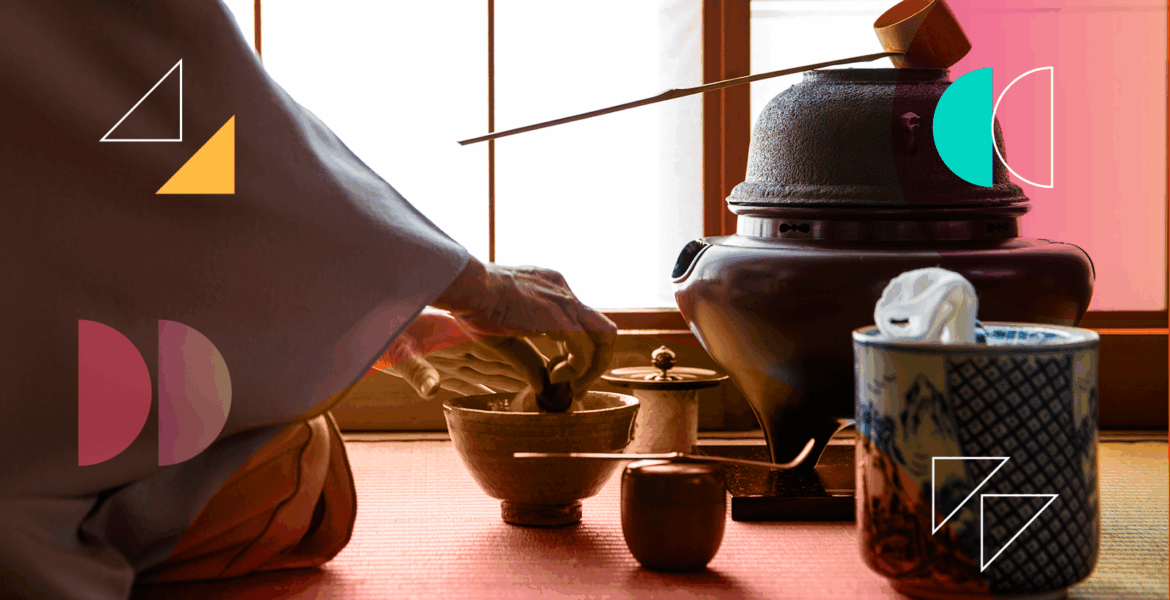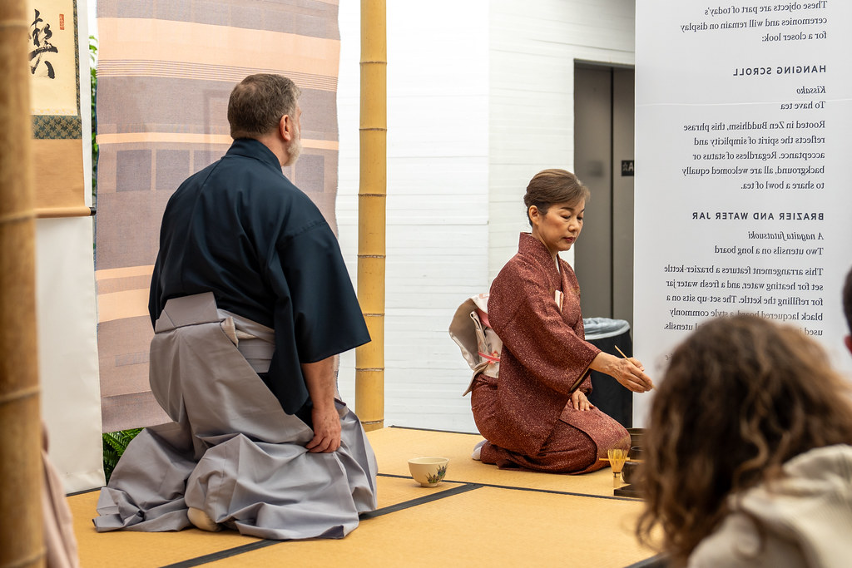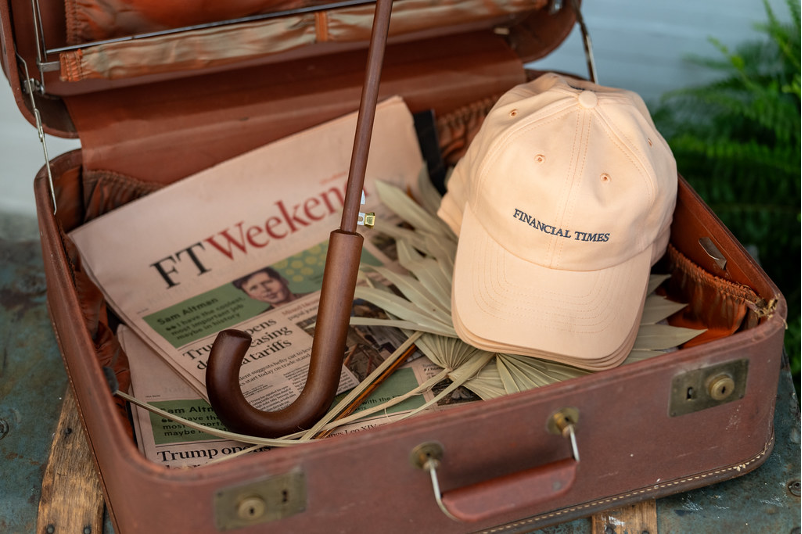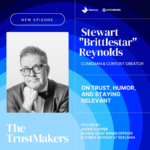By Chris Rhodes, Founder and Creative Director, Experience
We are currently working with Financial Times and Nikkei Inc. to mark the tenth year of their partnership through a shared brand experience. The Nikkei Financial Times Teahouse is a travelling activation appearing in Washington DC, Cannes and London, with each location tailored to its audience and setting, while held together by a common idea.
The vision for a Teahouse came from Financial Times, inspired by a decade of collaboration between Nikkei and FT, Japan and a UK headquartered company. Our role was to help translate that into a spatial and sensory experience that captured both cultures and could also live across multiple cities.
The creative direction began with a shared ritual, tea. The cultural insight was that tea is an element important to both cultures – though expressed in very different ways. In Japan the tradition of tea is reflective, often silent, while in the UK a cup of tea is often a shared experience. From there, we developed a modular bamboo structure influenced by Japanese architecture, to exhibit bespoke fabric commissioned by the FT from UK textile designers Wallace Sewell. The fabric was constructed from a paper yarn made in Japan and woven in a Century old fabric mill in Lancashire UK. It carries the colours of both brands and a design abstracted from a newspaper grid to celebrate the print heritage of both brands.

Where do you start when designing event formats that resonate across different markets while honouring different countries’ cultures?
Authenticity is not about decoration, it is about intention. We never begin with a visual or a format, we begin with people. Who is this for, where are they, what do they value, and how do they engage?
A party in New York is not the same as one in Lisbon or Berlin, even if the brief on paper looks identical. The audience changes the tone, the rhythm, the way the space is used. You cannot simply export an idea and expect it to land the same way. You have to design for context.
That is why we lean heavily on local insight. We have strategic partners around the world who help us test ideas early and call out anything that feels off. It keeps the work honest and avoids lazy assumptions.
With the Nikkei Financial Times Teahouse, the goal was not to represent British or Japanese culture in isolation, but to create something that celebrates an interconnection. A space that feels respectful, quietly symbolic, and able to shift its role depending on the location. In Washington it opens with a more reflective and ceremonial tone, in Cannes it becomes a social and content-driven space, in London it will play a more public role. But the core remains consistent.
Designing for multiple markets is not about compromise. It is about choosing your references carefully, knowing what to flex, and never assuming the audience needs the same thing in every place.
Are there any themes that have universal appeal across most business event audiences?
Rather than look for universal themes, we look for shared behaviours.
If by “themes” we mean visual tropes or party concepts, then no, those do not travel well. What feels playful in one market often feels cringeworthy in another. The clichés that haunt experience designers, masquerade balls, Alice in Wonderland, Bond nights, usually say more about internal indecision than audience insight.
But if we are talking about what resonates with people, there are definitely shared human drivers. Curiosity. Belonging. Surprise. The desire to feel part of something, even briefly. These are not creative concepts, they are human instincts. And when we design for those, we tend to land well, wherever we are.
What works across cultures is not a theme, but a methodology. Storytelling with purpose. A sense of journey. Activating the senses to create memory. When we take the time to understand the audience, and build around what they feel rather than what they expect, the work connects.
That is the foundation of our approach. Not, “what is the theme,” but “what do we want people to feel, remember and share.”
How do you adapt event design for regional relevance while maintaining brand consistency?
Event design is a variable, but the message is not. What we do is connect audiences to a client’s message through a live experience. That message stays consistent wherever it is delivered, but how it connects, and what makes it stick, depends on the people in the room.
Our role is not to redesign the brand or message, it is to understand how they will be received in different contexts, and to create the right conditions for engagement. Sometimes that means adjusting the tone or structure, sometimes it means rethinking how content is introduced, discussed or shared.
Recently, we supported a multi-city internal event for Amazon in Germany. Four cities, each with its own live audience, each representing a different part of the business. The sessions were specific to each team, but the idea was that everyone could see into what was happening elsewhere. When one location was active, the others tuned in. We helped design the agenda with Amazon to make sure each moment played to the strengths of the local teams, while contributing to the shared experience. We had to make sure each space worked in its own right but also felt part of a bigger picture.
We build for that kind of flexibility. The message stays clear, the brand stays recognisable, but the way it comes to life is shaped by the people on the receiving end.
What are the main challenges of event design and delivery for these cross-cultural partnerships?
The biggest challenge is usually clarity. You have to start with a message that is actually worth sharing. Too many cross-cultural projects fall down early because the idea is vague, or the brand wants to say everything to everyone. Get the thinking right at the start, or everything else becomes surface.
Once the message is clear, you have to be realistic. These kinds of events need proper time, local understanding, and a serious approach to delivery. That means having a clear budget, tight logistics, strong local partners, and excellent technical support. If you are trying to connect audiences across different cultures, time zones and formats, the infrastructure has to be solid.
You also have to find the balance between consistency and relevance. Some elements of the experience will need to adapt, others should not. That takes judgment and experience. Often it means working closely with local teams while still protecting the core idea.
Once that alignment is in place, everything else starts to move with purpose.
Projects like the Nikkei Financial Times Teahouse show what is possible when strategy, craft and cultural understanding come together. We will be in Cannes during Lions week, working on several client activations, and would be happy to connect while there. You can see more of our work at www.experience-event.com.













